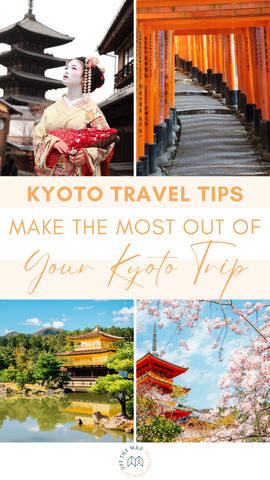In the heart of Japan there lies a city that beckons travelers from across the globe. An ancient imperial capital, shrouded in rich history and surrounded by natural beauty.
You could say that Kyoto is more than merely a travel destination, it is a journey through time itself.
Kyoto served as the capital of Japan for over 1000 years. It was only in 1868 whe Tokyo took over that title! that. The name for the city was Heian-Kyō, which literally means Capital of Peace and Tranquility. It's not surprising then, that the temples and shrines that adorn these cobblestone streets reach into the thousands.
This longevity has resulted in an incredible concentration of cultural, historical, and spiritual landmarks, with each street corner steeped in stories. Its well-preserved traditional wooden houses, historic districts, and cobblestone pathways offer a unique glimpse back into the spiritual and architectural era in which they were built.
There are a myriad of reasons why Kyoto is a must-visit for those seeking a travel experience beyond the mundane. In this article we will explore why planning ahead is key, some of the essential places to visit whilst you’re there, how you can incorporate the Japanese way of being into your trip and the significance of cultural landmarks in Kyoto. Ensure that your exploration of the city is both memorable and magical.

Tip 1: Timing is Everything in Kyoto
The seasons in Kyoto are as iconic as the places themselves. Spring brings the iconic cherry blossoms, while autumn dresses the city in fiery foliage. To experience Kyoto at the height of its beauty, consider planning your visit during these peak seasons.
Be mindful, though, as these times will attract more tourists, so booking accommodations and tickets in advance is vital. And while seeing Kyoto's most iconic attractions is a must, the crowds in these areas can get pretty overwhelming.
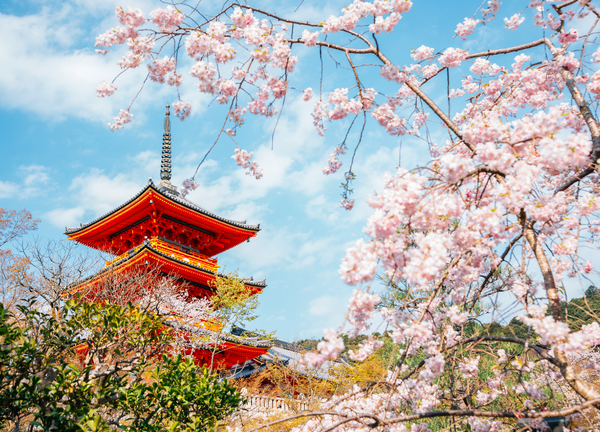
Tip 2: How to Avoid Crowds in Peak Season
For a chance to avoid the people, wake up with the sun and get there early. Both the beauty of the early morning light and the crowdless surroundings should be a reward enough for missing that lie-in.
Don't shy away from exploring lesser-known areas too. Gion's backstreets, Philosopher's Path, and hidden temples offer unique experiences away from the hustle and bustle. Discovering these hidden gems for yourself can feel like getting in on a well-kept secret.

Tip 3: How to Respect the Culture
Kyoto is home to some of Japan's most revered temples and shrines. While visiting these sacred sites, it's crucial to be respectful.
- Remove your shoes before entering,
- Keep your voice low
- Refrain from loud conversations.
- Be mindful of where you take photographs; some areas may be off-limits.
- While many signs and menus in Kyoto will have English translations, it's helpful to learn a few basic Japanese phrases as well.
The locals appreciate the effort, and it can be a fun way to connect to those you meet along the way.
In Gion, you might have the opportunity to see geisha and maiko, and whilst taking photos is tempting, always remember to be respectful and mindful of whether it is appropriate. These cultural icons are part of Kyoto's living history, and it's essential to treat them with reverence, and kindness.

Tip 4: Get a Bus and Subway Pass
Kyoto has an excellent public transportation system, consisting of a network of buses and subways. To navigate the city with ease and save on transportation costs, consider purchasing a Kyoto City Bus and Subway Pass.
It provides unlimited rides and is a cost-effective and fun way to explore the city. Kyoto's attractions are scattered across the city, so plan your daily itinerary carefully to maximize your time.
Group nearby sites together to avoid unnecessary travel. Don't forget to factor in time for leisurely strolls and spontaneous discoveries.
Tip 5: Embrace Tradition
Immerse yourself in Kyoto's culture by donning a kimono or yukata. Many shops in the city offer rental services, allowing you to stroll the streets in traditional attire. It's a fantastic way to capture the spirit of Kyoto and create lasting memories.

Kyoto is renowned for its kaiseki cuisine, a traditional multi-course meal that's both an art form and a culinary delight.
Reserve a table at a kaiseki restaurant for a taste of Kyoto's gastronomic heritage. It's an experience that will leave your taste buds singing.
Round out your education in Kyoto’s culture by participating in the tradition of communal bathing. Visit a sento (public bathhouse) or an onsen (hot spring) for a relaxing soak. It's not only therapeutic but also a great way of connecting with the local way of life.

Tip 6: Learn The Japanese Art of Living
Ikigai
To start your Kyoto journey, embrace the concept of ‘ikigai’ – the pursuit of a meaningful life.
Stroll through tranquil Zen gardens, participate in a tea ceremony, or try your hand at a traditional craft. In these moments, you’ll get a chance to discover a sense of aliveness and connection that might pass you by in everyday life.
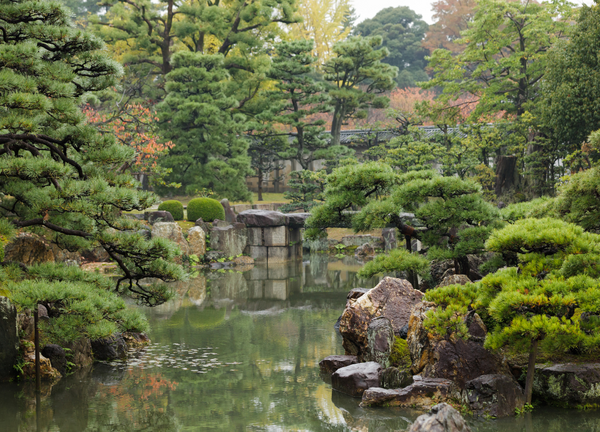
Kaizen
The philosophy of continuous improvement. In Kyoto, you’ll witness artisans honing their craft over generations. Explore the narrow cobblestone streets in Gion, the historic geisha district and embrace Kaizen by diving into Kyoto’s ever-evolving food scene that blends innovation with age-old recipes.
Hara Hachi Bu
A practice of mindful eating that encourages balance and moderation. Delight in kaiseki cuisine, a culinary art form that harmonizes taste, texture, and aesthetics. Savour each morsel while contemplating the beauty and joy of the simple things in life.

Shoshin
Also known as the beginner’s mind. Let your expectations fall to the side and take curiosity as your guide as you walk around the streets of Kyoto. Letting the ancient architecture and serene surroundings evoke a childlike sense of wonder.
‘Shinrin-yoku’
Amidst Kyoto’s urbanity, don’t forget the therapeutic practice of ‘Shinrin-yoku’ or forest bathing. The city’s bamboo groves in Arashiyama and the lush Philosopher’s Path offer refuge from the hustle and bustle of city living. Immerse yourself in nature, inhale the fragrant air, and reconnect to the pulse of nature.

Kakeibo
Even in this city of abundance, the financial wisdom of ‘Kakeibo’ can serve you well. While Kyoto’s charms may be abundant, they need not drain your wallet. Explore affordable guesthouses, dine at local eateries, and explore the natural wonders of the city that lie all around you.
The Cultural Significance of Kyoto
Now that you've gained some insight into what to expect and how to prepare for your trip to Kyoto let's learn about some of the historical and spiritually important landmarks that make Kyoto so special.
Kinkaku-ji (Golden Pavilion)
Home to some of Japan’s most iconic architectural wonders and deeply rooted in the country's history, we start with the Kinkaku-ji (Golden Pavilion). A Zen Buddhist temple located in the northern part of Kyoto. This Temple is renowned for its distinctive three-story building covered entirely in gold leaf, including the top two stories that are adorned with intricate architectural details.
The temple is surrounded by beautiful Japanese gardens, a reflective pond, and lush greenery.
Originally constructed in 1397, Kinkaku-ji was initially a retirement villa for the shogun Ashikaga Yoshimitsu. After his death, the villa was converted into a Zen temple following his will.
Kinkaku-ji is not only an architectural marvel but also a symbol of Zen Buddhism’s influence on Japanese culture. The temple’s shimmering appearance against the surrounding natural beauty creates a tranquil and contemplative atmosphere.
Visitors can explore the temple’s interior, which houses various relics and artworks, as well as the temple’s gardens, designed in the Muromachi period (14th-16th centuries). They include walking paths, ponds, islands, and carefully manicured vegetation.
Kinkaku-ji has been recognized as a UNESCO World Heritage Site and is part of the Historic Monuments of Ancient Kyoto. It attracts tourists and pilgrims alike, making it a must-visit destination for anyone exploring Kyoto’s cultural heritage.
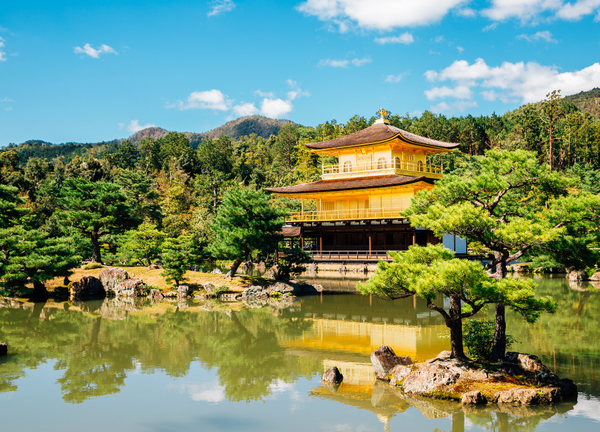
Nijo Castle
Next, we have the wooden Nijo Castle. Nijo Castle is a historic fortress located in Kyoto, built in the early 17th century by Tokugawa Ieyasu, the founder of the Tokugawa Shogunate. It is known for its beautiful gardens, intricate architecture, and unique “nightingale floors” that chirp when walked upon.
Constructed using a clever engineering technique involving nails and metal clamps beneath the floorboards. When weight is applied to the floor, these metal pieces rub against each other, producing a distinctive chirping sound resembling the song of a nightingale. This served as an early form of intrusion detection, alerting occupants to the presence of potential intruders.
The design and implementation of these floors at Nijo Castle reflect the sophisticated security measures employed during the castle’s construction in the early 17th century, showcasing the ingenuity of the time.
Today, visitors to Nijo Castle can experience the melodic sound of these historic nightingale floors as they explore the castle’s various buildings. Nijo Castle was the residence of the Tokugawa Shoguns when they visited Kyoto and played a pivotal role in the history of the Edo Period. In 1994, it was designated as a UNESCO World Heritage Site as well.
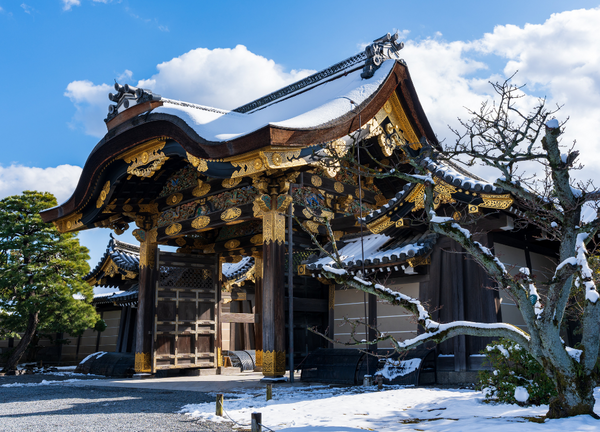
Fushimi Inari Shrine
Fushimi Inari Shrine is one of the most iconic and visited Shinto shrines in Japan. It is renowned for its thousands of vibrant vermilion torii gates that form a tunnel-like path leading up to Mount Inari.
The shrine is dedicated to Inari, the Shinto deity of rice, fertility, and prosperity. Visitors come to seek blessings for business success and good fortune and in return donate torii gates to the shrine as offerings or to express their gratitude.
Each gate bears the donor’s name and the date of the donation. This practice of donating gates has been ongoing for centuries, resulting in the incredible visual spectacle of the shrine’s torii-lined paths. It’s a unique and interactive way for people to participate in the shrine’s history and traditions.

Kiyomizu Temple
Kiyomizu Temple is a Buddhist temple that dates back to the 8th century. It is famous for its large wooden stage that offers stunning panoramic views of Kyoto, especially during the cherry blossom season. The temple is a UNESCO World Heritage Site and has deep cultural and religious significance.
The temple’s name, “Kiyomizu,” means “pure water,” and it is associated with a waterfall within the temple grounds, known for its healing properties.
One remarkable feature of Kiyomizu Temple’s main hall, known as the “Hondo” (Main Hall of the temple), is that it was constructed entirely without the use of nails. The temple’s wooden framework is held together by a complex interlocking system of wooden joints and brackets. This construction method, known as “zao-dzukuri” or “entasis,” is an impressive display of traditional Japanese architectural craftsmanship. The absence of nails allows the building to flex and withstand earthquakes, a testament to the ingenuity of the builders.
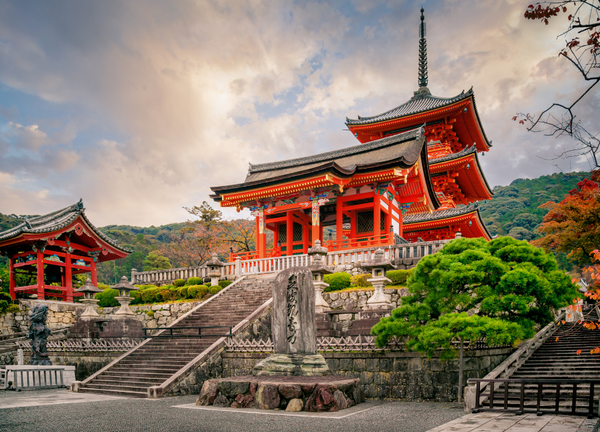
Zen Garden
Kyoto is also home to some of Japan's most famous zen gardens. These serene spaces, like the one at Ryoan-ji, provide a peaceful escape from the bustling city after a long day of roaming around and taking in the sights, this can be the perfect moment of rest.

Kyoto’s temples and shrines
Kyoto’s temples and shrines provide a unique opportunity for spiritual exploration. Zen meditation sessions are often available at temples, allowing visitors to experience moments of tranquillity.
Visiting temples like the Ginkaku-ji (Silver Pavilion) and the contemplative Ryoan-ji Zen rock garden offers a profound sense of peace and reflection. The Arashiyama Bamboo Grove and the Philosopher’s Path are also serene places to connect to nature from within the city.

Find Kyoto's Hidden Gems
While these attractions are iconic and well known for good reason, it should not take away from the many other lesser-known but equally as beautiful areas of the city.
Seek out hidden gems like the quaint village of Ohara, immerse yourself in local festivals, and engage with artisans. Opt for early morning or late evening visits to popular sites to avoid the tourist rush and capture the true essence of Kyoto.

Kyoto is not just a destination; it’s a philosophy and by embracing this mentality as you go along your travels and by respecting local customs, you support these time-tested traditions to stay alive and thrive.



